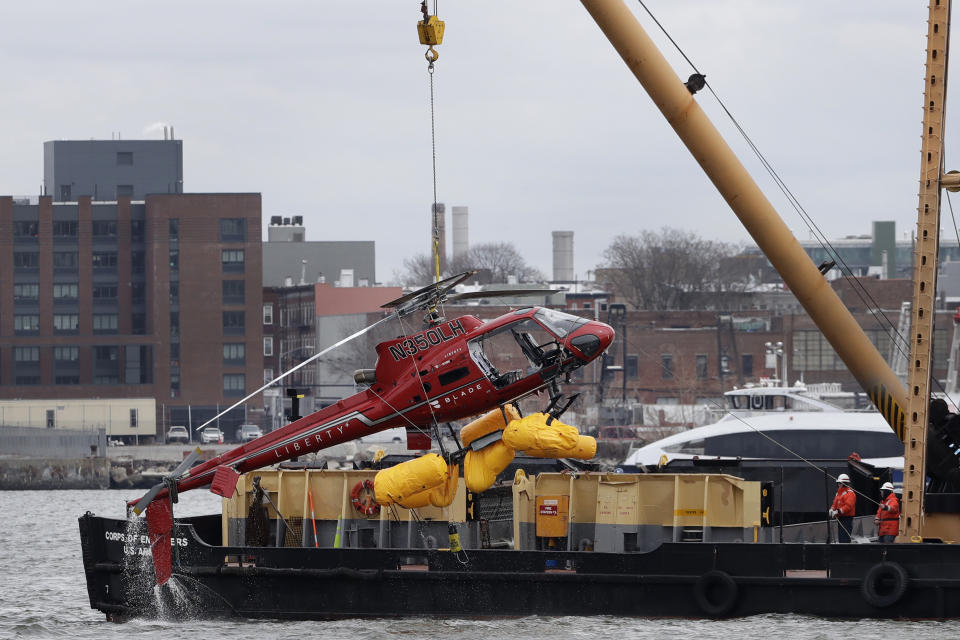Jury awards $116M to the family of a passenger killed in a New York helicopter crash
NEW YORK (AP) — A jury has awarded $116 million to the family of one of five people killed in an open-door helicopter that crashed and sank in a New York City river, leaving passengers trapped in their safety harnesses.
The verdict came this week in the lawsuit over the death of Trevor Cadigan, who was 26 when he took the doomed flight in March 2018.
Messages seeking comment were sent Friday to lawyers for his family and the companies that jurors blamed for his death. Those companies include FlyNYON, which arranged the flight, and Liberty Helicopters, which owned the helicopter and supplied the pilot. The jury also assigned some liability to Dart Aerospace, which made a flotation device that malfunctioned in the crash.
The chopper plunged into the East River after a passenger tether — meant to keep someone from falling out of the open doors — got caught on a floor-mounted fuel shutoff switch and stopped the engine, federal investigators found. The aircraft started sinking within seconds.
The pilot, who was wearing a seatbelt, was able to free himself and survived. But the five passengers struggled in vain to free themselves from their harnesses, the National Transportation Safety Board's investigation found.
All five died. They were Cadigan; Brian McDaniel, 26; Carla Vallejos Blanco, 29; Tristan Hill, 29; and Daniel Thompson, 34.
Cadigan, a journalist, had recently moved to New York from Dallas and was enjoying a visit from his childhood friend McDaniel, a Dallas firefighter.
The NTSB largely blamed FlyNYON, saying it installed hard-to-escape harnesses and exploited a regulatory loophole to avoid having to meet safety requirements that would apply to tourist flights.
FlyNYON promoted “sneaker selfies” — images of passengers' feet dangling over lower Manhattan — but told employees to avoid using such terms as “air tour” or “sightseeing" so the company could maintain a certification with less stringent safety standards, investigators said. The company got the certification via an exemption meant for such activities as newsgathering, commercial photography and film shoots.
In submissions to the NTSB, FlyNYON faulted the helicopter's design and the flotation system, which failed to keep the aircraft upright. DART Aerospace, in turn, suggested the pilot hadn't used the system properly. The pilot told the NTSB that the passengers had a pre-flight safety briefing and were told how to cut themselves out of the restraint harnesses.
After the crash, the Federal Aviation Administration temporarily grounded doors-off flights with tight seat restraints. The flights later resumed with requirements for restraints that can be released with just a single action.

